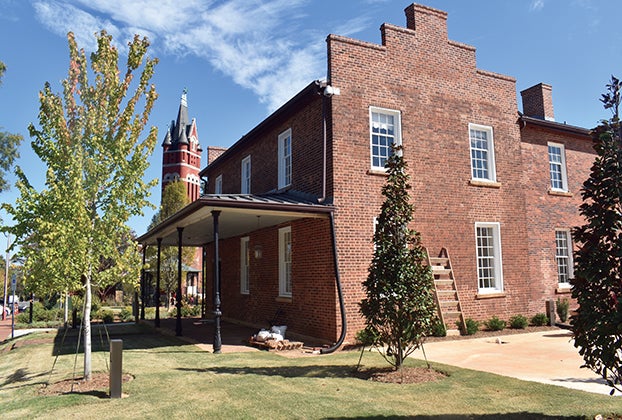Historic Preservation Commission signs off on some parts of Wrenn House plan
Published 12:02 am Friday, February 11, 2022

- Bell Tower Green’s leadership remains hopeful of leasing the Wrenn House. Ben Stansell/Salisbury Post File Photo
SALISBURY – Renovations to the Wrenn House have been on the agenda for Bell Tower Green for months and on Thursday, Salisbury’s Historic Preservation Commission signed off on some of the changes to the historic building.
The most notable sticking point and part of the presentation that was not approved was the addition of an elevator encased in a brick column on the south side of the building.
Bill Burgin, agent for Bell Tower Green LLC, told the commission moving the elevator, which would be required by the Americans with Disabilities Act, inside the building would impact the interior spaces and noted it would technically involve compromising more of the building, including making large holes in the floors of the building.
Burgin said the elevator shaft would be removable in the future and would only require the window ports be lengthened down to appropriate size for elevator entrances. He also noted the two windows that would have been removed could have been incorporated into the brick work on the shaft.
During the public comment period of the Thursday meeting, Historic Salisbury Foundation Director Kimberly Steig spoke on behalf of the organization and opposed the exterior placement of the elevator.
“The Wrenn House is one of the most iconic historic structures in Salisbury, and now that the Bell Tower Green is open, one of the most visible,” Steig said.
She cited unappealing aesthetics and two violations of written standards for additions: that they be as inconspicuously located as possible and that additions be constructed with the least possible loss of “historic fabric.”
Salisbury resident Clyde also was critical of the project, questioning whether people would really be able to see the Wrenn House through the additions.
Ultimately, the commissioners all agreed the exterior elevator shaft did not meet the written standards it uses to judge additions and denied approving this version of the elevator installation.
Burgin asked the commission if the elevator could be moved to the interior location it previously approved without bringing the issue back at another meeting. City Attorney Graham Corriher said that would be fine as long as the plan for the elevator remained identical to what was approved before.
The board had some stipulations on another proposed addition: A small building that would replace an existing stone one next to the house.
The existing stone building was built in the 1980s and does not match the rest of the building. Burgin explained in addition to the visual inconsistency, the floor of the building is several feet lower than that of the main structure and disconnected.
The new building would be about the same size as the old and incorporate some recycled stone from the 1980s building, but the floor would be on the same level as the main structure and it would directly connect to the kitchen, housing dry and cold storage.
Commission member Marcelo Menza commended the effort to make an addition that better matches the building but the board requested a window be added to the side of the addition to meet a standard recommending avoiding large sections of unbroken wall. It also requested roof brick work more consistent with the rest of the building.
An updated plan with those changes will have to be brought back to the commission. The board approved demolition of the existing stone building, a donor wall and fencing to the side of the building.
The ultimate goal is the return of a restaurant with rooftop seating to complement the rest of Bell Tower Green.




